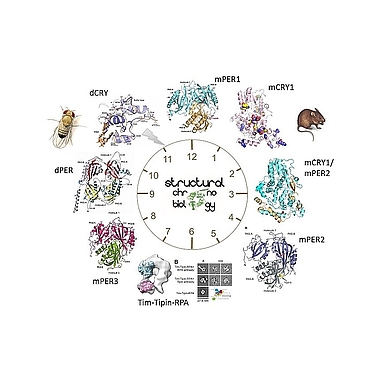Project 8.1

- PhD student: Marcel Conrady
- Supervisor: Eva Wolf
- Co-Supervisors: Miguel Andrade, Susanne Foitzik
- Further TAC-members: Gilles Travé
- Research Group
The anticipation of daily environmental changes allows important behavioral adaptations. On the molecular level this is made possible by a transcription-translational feedback loop of intrinsic ~24h periodicity, the circadian clock. Monarch butterflies have the longest migration of all migratory insects. They use the sun’s position and time information from their circadian clock to orient correctly during migration. We want to gain molecular insights of this unique circadian mechanism and how it leads to a compass sense.
Mechanisms to anticipate temporal environmental changes evolved multiple times in cyanobacteria, plants and animals. Adapting to daily changes makes it necessary to own a cell-autonomous oscillator with ~24h periodicity (circadian). All complex organisms have such a clock allowing them to open flowers at appropriate time, adjusting sleep-wake cycles, metabolic rates, sensing the change of seasons by comparing day length, etc. In animals and plants, a key molecule to the clocks are cryptochrome proteins which evolved from DNA repair enzymes. These molecules developed into working either as blue light sensors (Drosophild family, insects, plants) or as transcription inhibitors (mammals). The blue light receptors are used to synchronize the intrinsic 24h oscillator with the environmental day-night cycle by sun light. Mammals have multiple copies of the cryptochromes with slightly different roles. The bristle worm Platynereis dumerilii has a light sensitive cryptochrome (L-CRY) allowing it to sense moonlight to synchronize mating behavior. The light sensitivity in L-CRY is therefore different than in cryptochrome from Drosophila. The monarch butterfly (Danaus plexippus) combines elements of the mammalian and Drosophila clock (blue light sensitive (CRY1) and transcription repressor-type (CRY2) cryptochromes). The monarch butterfly uses it circadian clock also for its annual fall migration from the north-east of the USA to its overwintering sites in Mexico. Navigation in this species is based on the azimuthal (E-S-W) position of the sun and compensated against time (time-compensated sun compass). We are interested to learn how the clock mechanisms and cryptochrome light sensitivities evolved.
